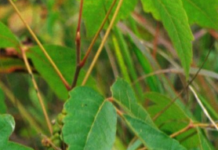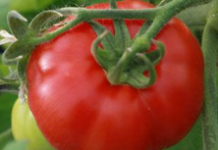Volatilization is a different problem altogether, and almost impossible to trace back to a source. Some herbicides, particularly the ester formulations of 2,4-D and related chemicals are prone to vaporize, and move off site. The conditions that promote volatilization (high humidity, low wind speeds) are different than conditions that promote drift (high wind speeds). Sometime the damage is caused by the homeowner themselves, spraying for weeds in their lawn.
The various oak species are quite sensitive to herbicide exposure, especially when the new leaves are just expanding. It is the time-sensitive nature of exposure that will lead to normal leaves being found on the same twig as badly distorted leaves. Redbud is another tree species that is very sensitive to herbicides. However, the presence of twisted and cupped leaves on your tree does not mean that tree will die. If most of the leaves remain green, and if new leaves emerge without symptoms, the exposure was not severe enough to do any real harm. This is a recurring problem, due to agriculture being the dominant land use in Kansas, but fortunately the damage, although striking visually, is usually just superficial, and the tree will grow out of it just fine. (Charlie Barden)




